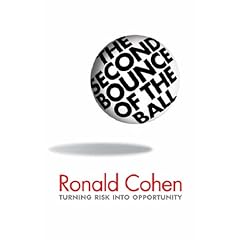 Deciding to work with Analysts
Deciding to work with AnalystsBuyers are faced with an increasing array of competing technologies and solutions. As a result buyers are looking for information that is more authoritative, impartial and comprehensive to aid the process of short-listing and selecting vendors.
But what influence do analysts have on your customers? To find out you may need to:
• Ask your customers if they have read or considered analyst reports in purchasing your solution / similar solutions.
• Review what analysts have to say about the solutions you are supplying – have they profiled any of your competitors?
• Check your competitor’s web sites and brochures – are analysts quoted?
• List the thought-leaders in your industry – are analysts to be found among them?
Even a small company that uses analysts right should expect to get 6-12 leads per annum from the source. The benefits don’t stop there however they use analysts (in conjunction with a number of other activities) to build their profile and level of brand awareness too.
Lessons in dealing with analysts
One of our clients spent more than 40k in just 12 months with one of the leading analysts. What results did they get? Well, in their words ‘none’. In fact they suspected that it cost them business.
When the analysts’ grid positioning their company alongside competitors was produced they were far from happy about how they were presented. They quickly realised that any potential customer who read the analysis would probably be dissuaded from contacting their company. What a disaster!
So what went wrong? The client’s management team claims that they made the mistake of being ‘more honest than the competitors had been’, pointing out that x, y and z competitor simply did not have the range of functionality claimed. In fact they used the word ‘naïve’, as opposed to ‘too honest’ to describe how they themselves had briefed the analysts.
A key lesson is that analysts need to he helped to analyze your product – you have got to steer them in the right direction. Plus you have got to see what the analyst is going to say before it goes to print.
However, understanding why the analysts failed to deliver requires some further exploration. The key problem for the client was that the product and positioning they wanted to achieve was more of a promise that reality. While product development on the new features and functionality (so important to the analysis) was substantially complete, there were no valid reference sites. The customers cited as reference sites were using older more limited solutions and as a result it was on the basis of those that the analyst grid positioned the company.
So another lesson is that what your customers say about you is very important in shaping what analysts will say. In the past analysts took your word for it, now they want to hear from, or at least reference your customers. They want to talk about products that have been released and have been sold. So, there is not much point in approaching analysts until you are ready.
Some tips on working with Analysts
Many of our clients wrestle with the issue of how to get analyst attention and what it will cost. There is an increasing suspicion that analysts won’t do anything without getting paid. However, as some of our clients have discovered, the approach to analysts very much determines what you get and what it is going to cost. Some of the considerations include:
• Having a clear and differentiated positioning for the analyst – a reason why his/her analysis will be incomplete without reference to your solution
• Selecting the right analyst – that includes deciding if you want one that is focused on the US or the UK (for example) on large companies, as opposed to small, generalist, versus specialist Profiling the different analysts and reading their work is key here.
• Prepare an analyst pack that contains not volumes of technical and related information, but readily accessible competitor tables, customer stories, product benefits, etc.
• Position yourself and your company as an expert and thought leader in the space, don’t just confine your briefing to your company alone (that he can probably get from your website or marketing literature).
• First, seek a briefing with the analyst and make sure you are on their radar (to do this you are going to need an elevator pitch that makes it clear why it will be worthwhile for them to talk to you). Then take it from there in terms of deciding what services you can avail of.
• With permission from the analyst use their information on your website, send analyst reports to your customers and prospects, highlight it in publicity/pr, etc.
The new analysts movement
In response to the growing influence of analysts a number of alternative analyst models have emerged and though leaders on the web have come into their own. The need for more information on the part of buyers in being meet in part by new forms of web marketing, in particular online communities, user groups, blogging and so on. They may not be as glamorous as the heavily branded industry analysts, however they are playing an increasingly important role – just type in some key words into a search engine regarding your industry and see how prominently they are often displayed.
So, if you are going to invest in analysts, don’t over look the more obvious methods of providing richer and more independent information to your customers – the web.
• Ask your customers if they have read or considered analyst reports in purchasing your solution / similar solutions.
• Review what analysts have to say about the solutions you are supplying – have they profiled any of your competitors?
• Check your competitor’s web sites and brochures – are analysts quoted?
• List the thought-leaders in your industry – are analysts to be found among them?
Even a small company that uses analysts right should expect to get 6-12 leads per annum from the source. The benefits don’t stop there however they use analysts (in conjunction with a number of other activities) to build their profile and level of brand awareness too.
Lessons in dealing with analysts
One of our clients spent more than 40k in just 12 months with one of the leading analysts. What results did they get? Well, in their words ‘none’. In fact they suspected that it cost them business.
When the analysts’ grid positioning their company alongside competitors was produced they were far from happy about how they were presented. They quickly realised that any potential customer who read the analysis would probably be dissuaded from contacting their company. What a disaster!
So what went wrong? The client’s management team claims that they made the mistake of being ‘more honest than the competitors had been’, pointing out that x, y and z competitor simply did not have the range of functionality claimed. In fact they used the word ‘naïve’, as opposed to ‘too honest’ to describe how they themselves had briefed the analysts.
A key lesson is that analysts need to he helped to analyze your product – you have got to steer them in the right direction. Plus you have got to see what the analyst is going to say before it goes to print.
However, understanding why the analysts failed to deliver requires some further exploration. The key problem for the client was that the product and positioning they wanted to achieve was more of a promise that reality. While product development on the new features and functionality (so important to the analysis) was substantially complete, there were no valid reference sites. The customers cited as reference sites were using older more limited solutions and as a result it was on the basis of those that the analyst grid positioned the company.
So another lesson is that what your customers say about you is very important in shaping what analysts will say. In the past analysts took your word for it, now they want to hear from, or at least reference your customers. They want to talk about products that have been released and have been sold. So, there is not much point in approaching analysts until you are ready.
Some tips on working with Analysts
Many of our clients wrestle with the issue of how to get analyst attention and what it will cost. There is an increasing suspicion that analysts won’t do anything without getting paid. However, as some of our clients have discovered, the approach to analysts very much determines what you get and what it is going to cost. Some of the considerations include:
• Having a clear and differentiated positioning for the analyst – a reason why his/her analysis will be incomplete without reference to your solution
• Selecting the right analyst – that includes deciding if you want one that is focused on the US or the UK (for example) on large companies, as opposed to small, generalist, versus specialist Profiling the different analysts and reading their work is key here.
• Prepare an analyst pack that contains not volumes of technical and related information, but readily accessible competitor tables, customer stories, product benefits, etc.
• Position yourself and your company as an expert and thought leader in the space, don’t just confine your briefing to your company alone (that he can probably get from your website or marketing literature).
• First, seek a briefing with the analyst and make sure you are on their radar (to do this you are going to need an elevator pitch that makes it clear why it will be worthwhile for them to talk to you). Then take it from there in terms of deciding what services you can avail of.
• With permission from the analyst use their information on your website, send analyst reports to your customers and prospects, highlight it in publicity/pr, etc.
The new analysts movement
In response to the growing influence of analysts a number of alternative analyst models have emerged and though leaders on the web have come into their own. The need for more information on the part of buyers in being meet in part by new forms of web marketing, in particular online communities, user groups, blogging and so on. They may not be as glamorous as the heavily branded industry analysts, however they are playing an increasingly important role – just type in some key words into a search engine regarding your industry and see how prominently they are often displayed.
So, if you are going to invest in analysts, don’t over look the more obvious methods of providing richer and more independent information to your customers – the web.


















